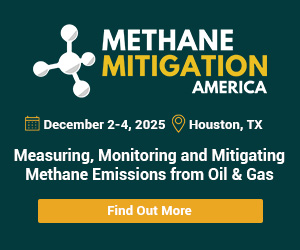

PSYCHOLOGICAL SHIFT
A psychological shift in Europe’s gas market appears to have taken place: traders now assume gas will be there.
First, European LNG imports are also not sky-high. They may be up around 10% year-on-year so far in 2025, but they are 10% below 2022 and 2023 levels for the same period, according to Kpler data.
Yet, even with Europe sitting on less gas storage, TTF prices are still only around a quarter of 2022 levels and roughly a third lower than in 2023 and 2024.
This suggests traders are relaxed about Europe having sufficient gas supplies this winter, even if storage levels decline.
That confidence rests on a wave of new supply, with even more expected as new U.S. liquefaction capacity comes online.
Global LNG cargoes in transit surged to a record 22 million tons last week, with the U.S. accounting for more than a third, according to Kpler.
And U.S. LNG capacity – which has risen about 15% this year to 19 billion cubic feet per day – is set to climb to 27 bcfd by the end of 2027, according to LSEG.

UPSETTING THE BALANCE
Risks remain. A prolonged cold snap in Europe or Asia could intensify competition for cargoes and tighten the market. That is unlikely to produce extreme price swings, however, given the current supply‑demand balance.
Nor is a Ukraine ceasefire likely to upend this new equilibrium. While news of a deal might initially spur a price move, it probably wouldn’t prove durable.
Even if sanctions on Russia’s energy sector were eased, European governments would be reluctant to re-embrace Moscow as a core supplier after the shock of 2022. Some limited Russian flows might resume, especially to landlocked central and eastern European countries, and Russian LNG projects could add more volumes to the global market. Most of those flows, however, would likely continue to be absorbed outside Europe, as they have since the invasion.
While Europe’s new LNG-focused gas strategy has its risks, including a heavy reliance on U.S. supplies, it offers more room to maneuver compared with the inflexibility and vulnerability of heavy pipeline dependence on Russia.
This new balance should offer European consumers and industries much relief, and, hopefully, predictability, following the crisis years since 2022.
Ron Bousso Editing by Marguerita Choy
Share This:




 CDN NEWS |
CDN NEWS |  US NEWS
US NEWS 
































Ron Bousso
(Reuters) – Europe’s gas market is far calmer today after years of turmoil that saw the region swap Russian supplies for liquefied natural gas (LNG) imports, a strategy that is unlikely to change even if U.S. President Donald Trump brokers a peace deal in Ukraine.
The White House is pushing Moscow and Kiev to agree to a plan to end the almost four-year war. If successful, Russian oil and gas might soon begin to trade more openly. But that will likely do little to change Europe’s gas landscape.
Get the Latest US Focused Energy News Delivered to You! It's FREE: Quick Sign-Up Here
Benchmark TTF European gas prices traded below 30 euros per megawatt hour this week, the lowest for this season since before Russia’s full-scale invasion of Ukraine in February 2022. Prices also slipped 2% on Tuesday after reports that Kiev had backed parts of the deal.
That muted reaction reflects the enormous transformation of Europe’s gas market since the invasion and resulting EU sanctions on Russia triggered the region’s worst energy crisis in 50 years.
Europe has today largely shaken off its outsized pre-invasion reliance on Russian pipeline gas, shifting instead to LNG, primarily from the U.S., the world’s top producer and exporter of the fuel.
So after three anxious winters dominated by fears over dwindling storage levels, the well-supplied market has settled into a new, calmer norm.
FEWER WINTER JITTERS
Recent price behavior tells the story.
A cold spell hit northwest Europe last week, leading to a rapid depletion of gas stocks, with northwest Europe’s gas demand jumping by 80% from the previous seven days, according to LSEG data.
And European gas storage is currently only around 79% full, compared with 88% last year and a 10-year average of 86.5%, according to Gas Infrastructure Europe.
A few years ago, this scenario would likely have triggered a price spike and political panic. But not this year – prices have barely budged.
The difference is LNG. Ample cargoes, mostly from the U.S., have kept any nerves in check, helped along by forecasts for milder temperatures in the coming weeks.